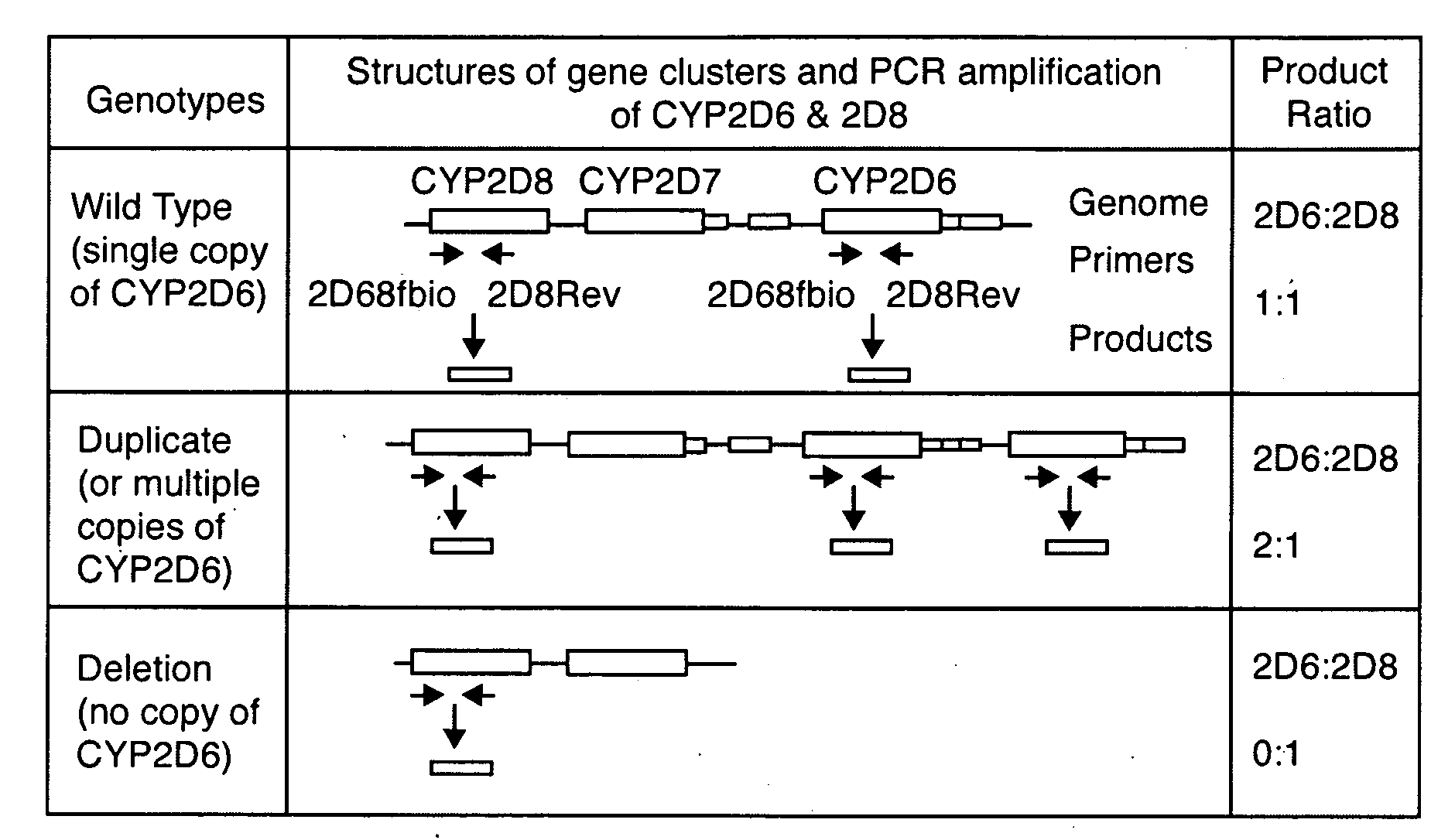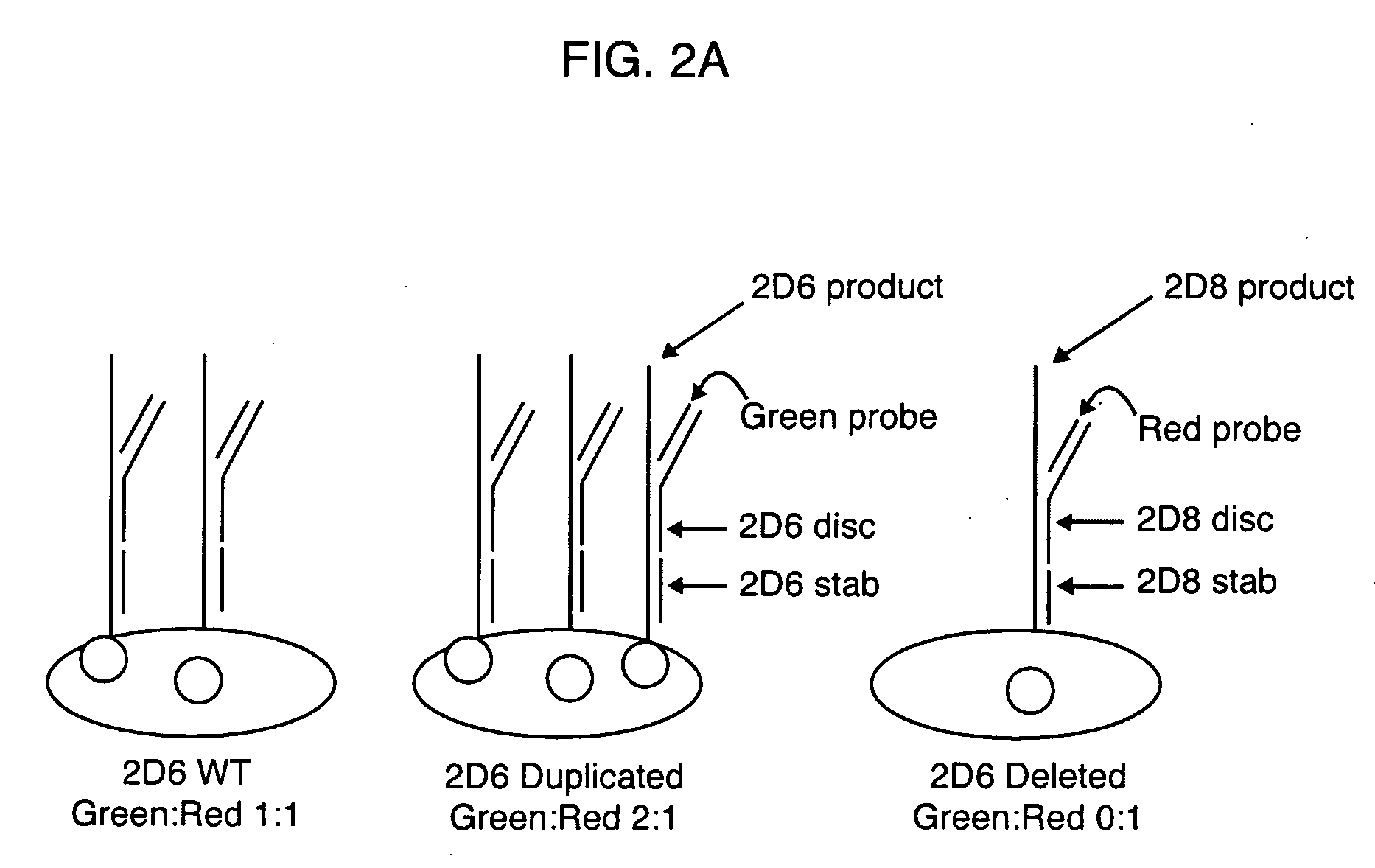Method for Detecting Large Mutations and Duplications Using Control Amplification Comparisons to Paralogous Genes
a technology of gene amplification and control amplification, applied in the field of detecting biological samples for genetic mutations, can solve the problems of increased drug dosage and subsequent drug under-dosing, patients with um phenotype may suffer from therapeutic failure, and achieve the effect of convenient and simultaneous detection of probes
- Summary
- Abstract
- Description
- Claims
- Application Information
AI Technical Summary
Benefits of technology
Problems solved by technology
Method used
Image
Examples
example 1
Sample Preparation
[0076]Genomic DNA (gDNA) was prepared from human whole blood samples obtained from San Diego Blood Bank (San Diego, Calif., USA) using Qiagen Midi DNA Kit (Qiagen, Valencia, Calif., USA). The purified DNA was re-suspended in deionized dH2O and stored at −20° C. until use. The AmpliTaq PCR kit was purchased from PE / Applied Biosystems (Foster City, Calif., USA), and the Expand Long Template PCR System was purchased from Roche Applied Science. All oligonucleotides were synthesized in the Integrated DNA Technologies (IDT, Coralville, Iowa, USA).
[0077]Sample Amplification
[0078]To analyze CYP2D6 gene duplication and deletion, a duplex PCR strategy was developed that amplifies 2 heterozygous products of equal product length (300 bps) from the CYP2D6 and CYP2D8 genes, respectively, with a single pair of primers that hybridize to the common binding sequences in the CYP2D6 and CYP2D8 genes, as shown in FIG. 1. The forward, but not the reverse, primers were biotinylated. The ...
example 2
Specificity of Product Amplification and Discrimination
[0084]High specificity of genetic loci amplification and discrimination is important to the present invention. In order to verify sufficient specificity and discrimination, PCR was conducted to amplify the CYP2D6 and CYP2D8 genes separately, or simultaneously, using a common forward primer (2D68fbio) but different reverse primers, as shown in FIG. 3 and Table 1. All reactions proceeded as described previously. After loading onto a NanoChip® Electronic Microarray, the products were incubated under hybridization conditions with a reporter mix containing discriminator probes for both CYP2D6 and CYP2D8 gene products. As shown in FIG. 4, the genes were selectively amplified with designated primer sets. The CYP2D6 gene product hybridized only to the CYP2D6 discriminator probe and not to CYP2D8 discriminator probe, thereby producing a clean green signal for the CYP2D6 gene product on Electronic Microarray (the ‘2D6rev’ pad).
[0085]The c...
PUM
| Property | Measurement | Unit |
|---|---|---|
| temperature | aaaaa | aaaaa |
| temperature | aaaaa | aaaaa |
| temperature | aaaaa | aaaaa |
Abstract
Description
Claims
Application Information
 Login to View More
Login to View More - R&D
- Intellectual Property
- Life Sciences
- Materials
- Tech Scout
- Unparalleled Data Quality
- Higher Quality Content
- 60% Fewer Hallucinations
Browse by: Latest US Patents, China's latest patents, Technical Efficacy Thesaurus, Application Domain, Technology Topic, Popular Technical Reports.
© 2025 PatSnap. All rights reserved.Legal|Privacy policy|Modern Slavery Act Transparency Statement|Sitemap|About US| Contact US: help@patsnap.com



